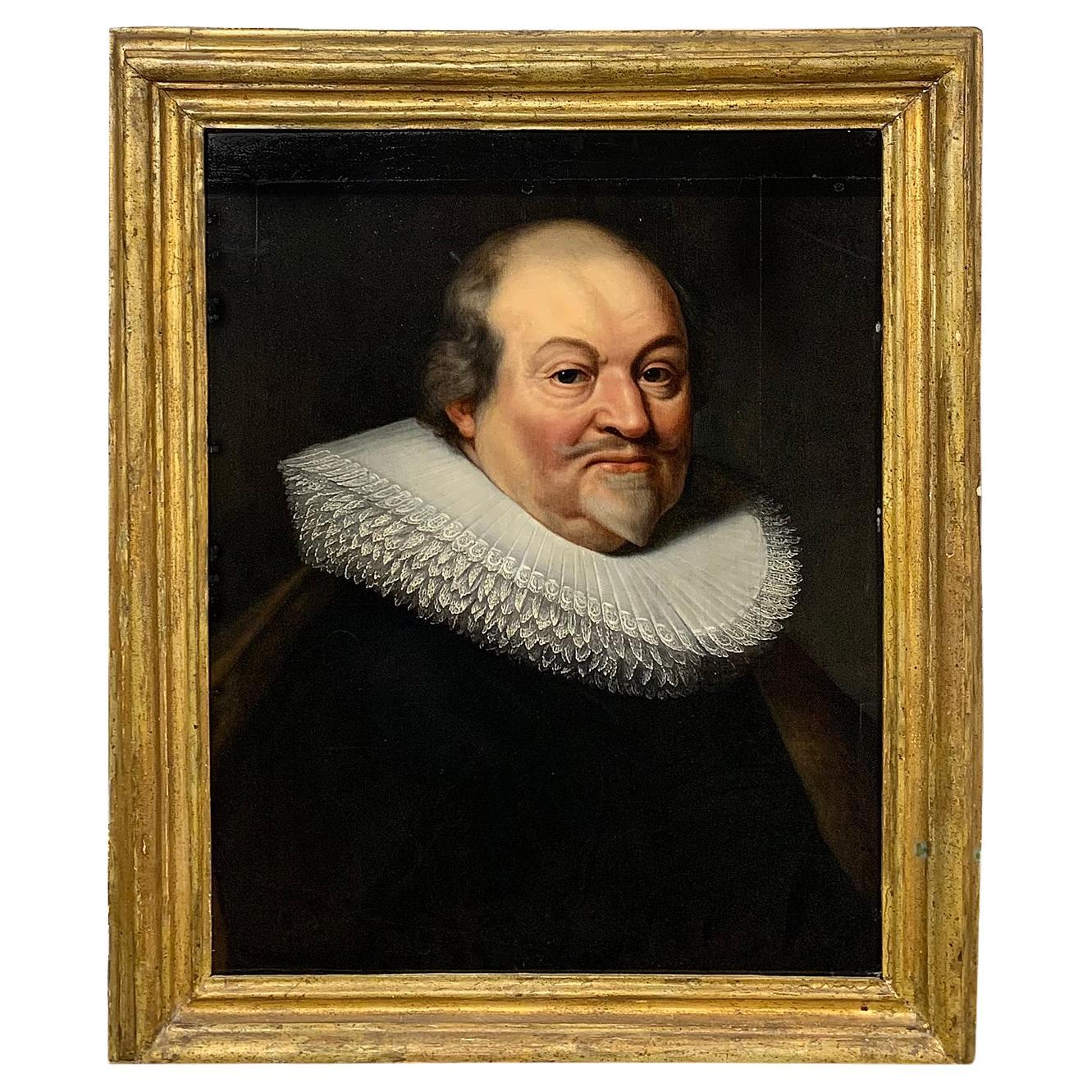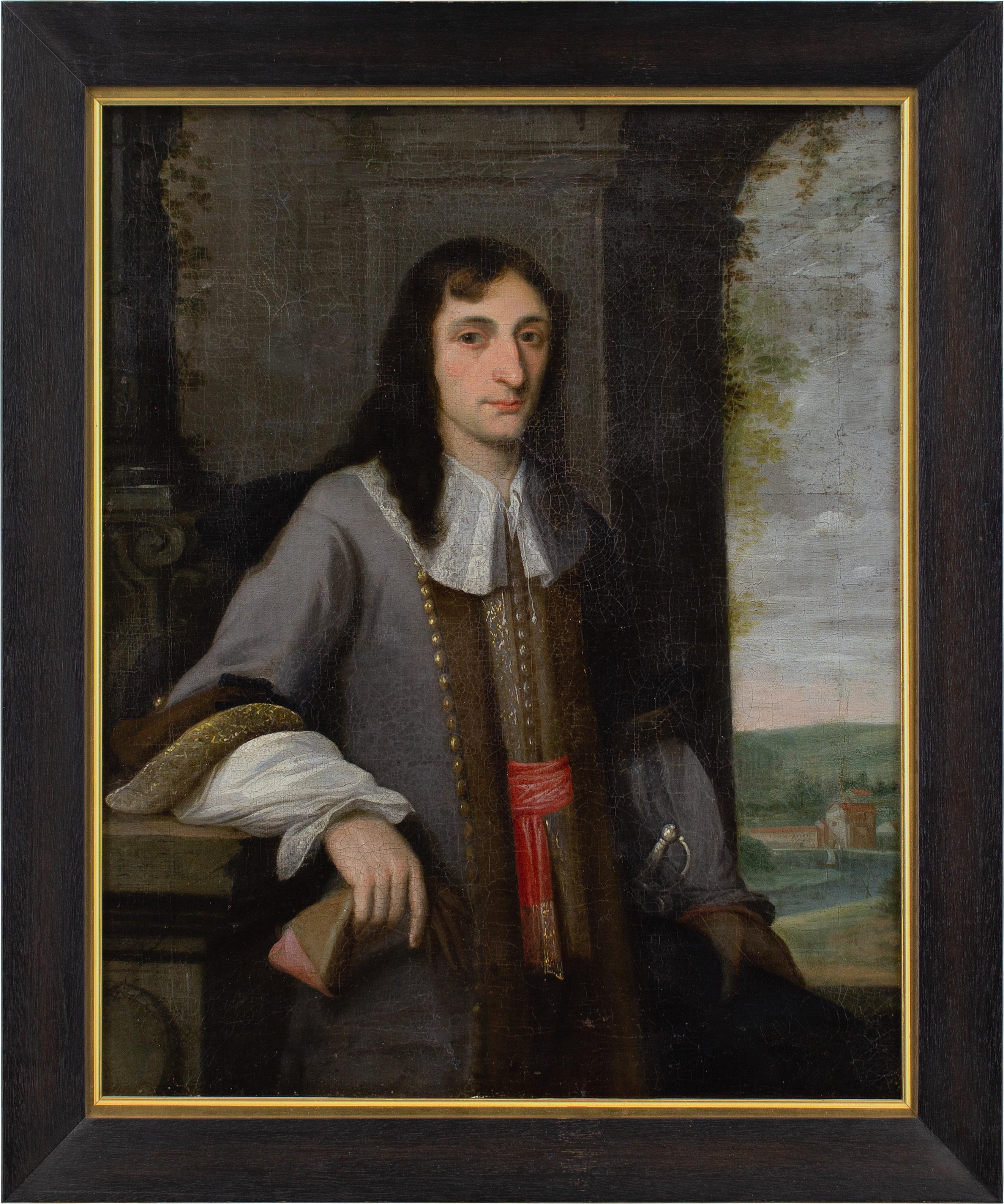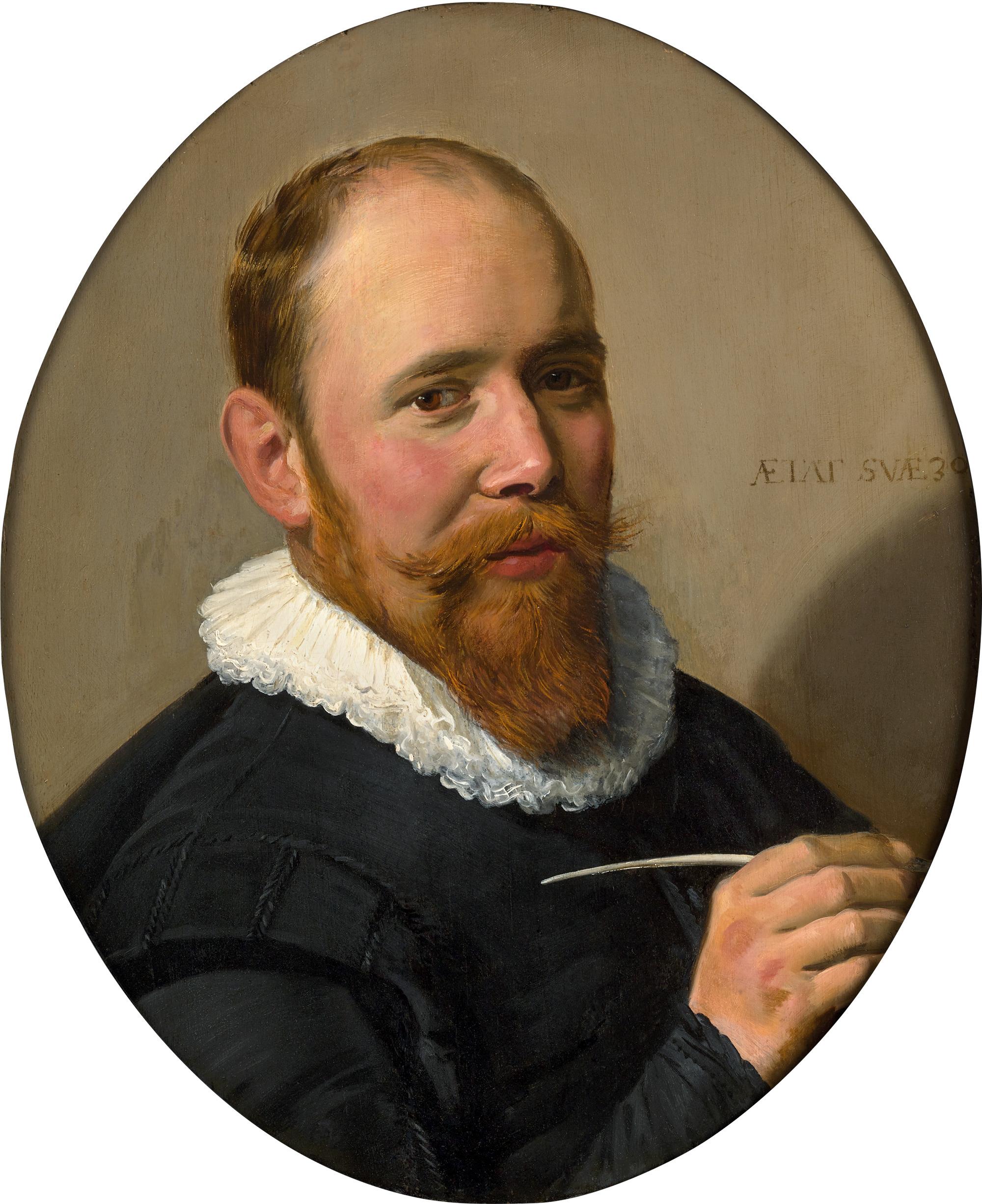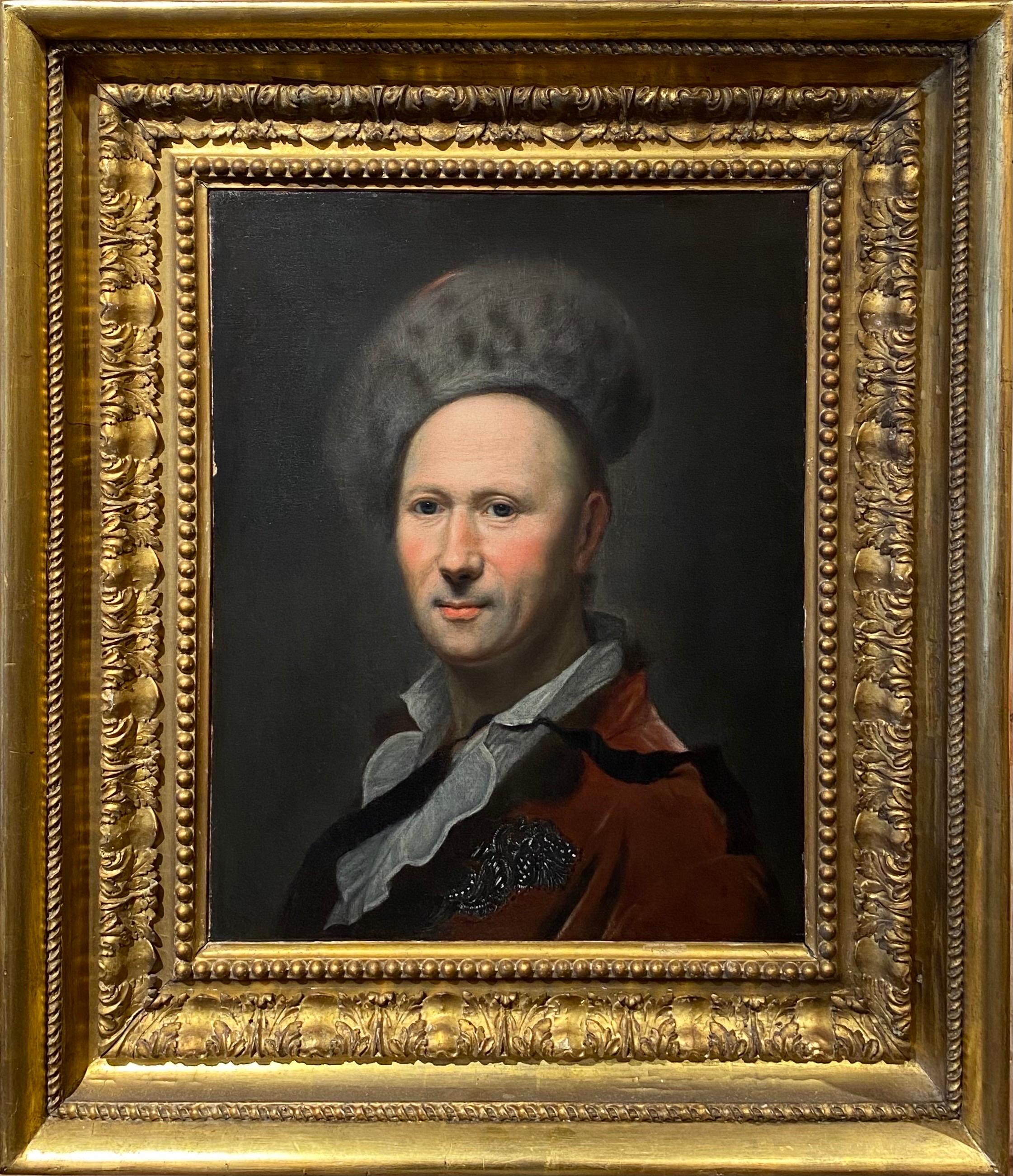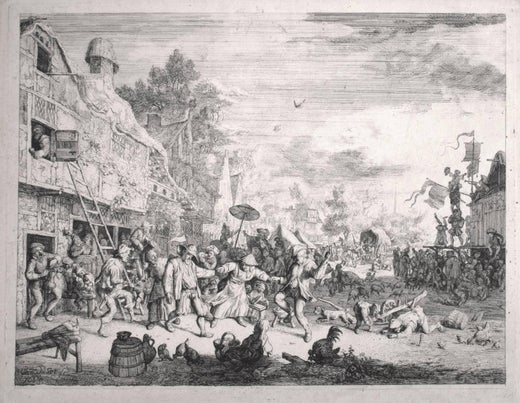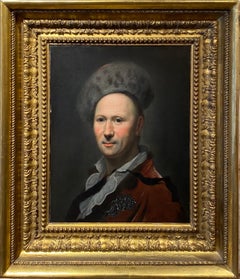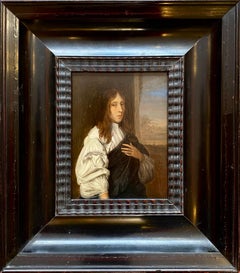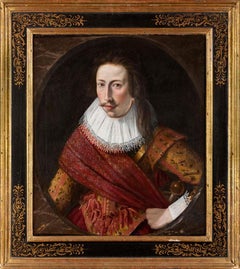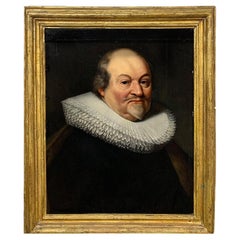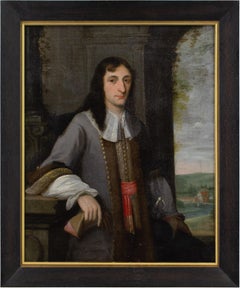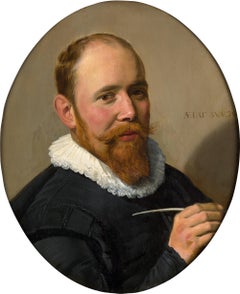Items Similar to Portrait of a Man, 17th Century Dutch Oil on Panel Portrait
Want more images or videos?
Request additional images or videos from the seller
1 of 3
Cornelis DusartPortrait of a Man, 17th Century Dutch Oil on Panel Portrait
$8,173.83
£6,000
€7,010.13
CA$11,431.83
A$12,459.67
CHF 6,488.44
MX$150,335.14
NOK 81,562.25
SEK 76,567.98
DKK 52,356.77
About the Item
Circle of Cornelis Dusart
Dutch 1660 - 1704
Portrait of a Man
Oil on panel
Image size: 7¾ x 5¼ inches
Giltwood frame
Cornelis Dusart
Cornelis Dusart (April 24, 1660 – October 1, 1704) was a Dutch genre painter, draftsman, and printmaker.
He was born in Haarlem. Dusart was a pupil of Adriaen van Ostade from about 1675 to 1679,[1] and was accepted into the Haarlem Guild of St. Luke in 1679. His works are similar in style and subject to those of his mentor. Especially notable are his highly finished drawings of peasants, depicted singly in coloured chalks and watercolour.
He died in Haarlem.
- Creator:Cornelis Dusart (1660 - 1704, Dutch)
- Dimensions:Height: 7.75 in (19.69 cm)Width: 5.25 in (13.34 cm)
- More Editions & Sizes:1 of 1Price: $8,174
- Medium:
- Movement & Style:
- Period:
- Condition:
- Gallery Location:London, GB
- Reference Number:1stDibs: LU5244521482
Cornelis Dusart
Cornelis Dusart was a Dutch genre painter, draftsman and printmaker. He was born in Haarlem. Dusart was a pupil of Adriaen van Ostade from about 1675–79 and was accepted into the Haarlem Guild of St. Luke in 1679. His works are similar in style and subject to those of his mentor.
About the Seller
5.0
Vetted Professional Seller
Every seller passes strict standards for authenticity and reliability
Established in 2007
1stDibs seller since 2014
85 sales on 1stDibs
Typical response time: 4 hours
- ShippingRetrieving quote...Shipping from: London, United Kingdom
- Return Policy
Authenticity Guarantee
In the unlikely event there’s an issue with an item’s authenticity, contact us within 1 year for a full refund. DetailsMoney-Back Guarantee
If your item is not as described, is damaged in transit, or does not arrive, contact us within 7 days for a full refund. Details24-Hour Cancellation
You have a 24-hour grace period in which to reconsider your purchase, with no questions asked.Vetted Professional Sellers
Our world-class sellers must adhere to strict standards for service and quality, maintaining the integrity of our listings.Price-Match Guarantee
If you find that a seller listed the same item for a lower price elsewhere, we’ll match it.Trusted Global Delivery
Our best-in-class carrier network provides specialized shipping options worldwide, including custom delivery.More From This Seller
View AllPortrait of Conrad Friedrich Hurlebusch, Early 18th Century Oil Painting
By Dominicus van der Smissen
Located in London, GB
Dominicus van der Smissen
Early 18th Century
Portrait of Conrad Friedrich Hurlebusch
Oil on canvas
Image size: 20½ x 16¼ inches
Period gilt frame
This is a portrait of Conrad Friedrich Hurlebusch, composer, Kapellmeister and organist, whom Van der Smissen most probably portrayed during his stay in Hamburg, Brunswick or Amsterdam. The identification is based on the reproduction of the portrait which was engraved by Pieter Anthony Wakkerdak (1740- 1774).
Van der Smissen has reduced the face of the sitters to an egg-shaped oval in three-quarter view, applying diminution to one half of the figure’s torso, which is farther away from the viewer. This partial side view, with the head turned to look at the viewer over the shoulder, creates spatial depth and brings the figure to life by avoiding the stiffness of a frontal depiction.
Because the artist chose to highlight the figure from above, a distinct shadow is cast under the tip of the nose, in the shape of a triangle. This is an often recurring and almost ‘signature’-like feature in Van der Smissen’s oeuvre.
Hurlebusch's garments are of a very high quality and serve to reflect the sitter’s wealth, status and elegance. During this period, gentlemen often shaved their heads in order to facilitate the wearing of a wig, which wouldbe worn with a suit. Here Hurlebusch has been depicted in a luxurious turban-like cap lined with lynx fur, a highly fashionable and expensive material at the time.
Over his shirt, he wears a velvet fur-lined gown adorned with decorative clasps fashioned from silver braid. The elegant informality of his appearance can be seen in his unbuttoned shirt and the unfastened black ribbon hanging from his button hole, which has been artfully arranged into a fluttering drape by the portraitist.
The Sitter
Hurlebusch was born in Brunswick, Germany. He received the first instructions in his field from his father Heinrich Lorenz Hurlebusch, who was also a musician. As an organ virtuoso, he toured Europe, visiting Vienna, Munich and Italy.
From 1723 to 1725 he was Kapellmeister in Stockholm; later he became Kapellmeister in Bayreuth and Brunswick, and lived in Hamburg from 1727 to 1742, where he had contact with fellow composers Johann Mattheson and Georg Philipp Telemann. He made his living composing, performing and teaching.
In 1735 and 1736, he is believed to have visited Johann Sebastian Bach in Leipzig, who promoted Hurlebusch’s compositions as the local seller...
Category
Early 18th Century Old Masters Portrait Paintings
Materials
Canvas, Oil
Portrait of a Young Man - 17th Century Portrait in Oil
By Pieter Harmensz Verelst
Located in London, GB
Circle of Pieter Harmensz Verelst
1618 - 1678
Portrait of a Young Man
Oil on oak panel
Image size: 7 ½ x 5 ¾ inches
Dutch ripple frame
Category
18th Century and Earlier Old Masters Portrait Paintings
Materials
Oil, Panel
Portrait of an Officer, Cornelius Johnson, 17th Century Old Masters
By Cornelius Johnson
Located in London, GB
Circle of Cornelius Johnson
Circa 1620’s
Portrait of a Officer
Oil on canvas
Image size: 28 x 24 inches
Period style hand made frame
Provenance
Private European Estate
This striking portrait dates to around 1620, as you can see from the images of the sash the detail is very high. The sash is decorated with gold thread and would have cost a small fortune at the time. Sashes were originally developed for a military function (making officers more visible for their men during combat), but soon became a primarily male fashion...
Category
Early 17th Century Old Masters Portrait Paintings
Materials
Oil
Portrait of a Gentleman, 17th Century Dutch Old Masters Oil
Located in London, GB
Circle of Gerard van Honthorst
1592 - 1656
Portrait of a Gentleman
Oil on wooden panel
Image size: 29 x 23 inches
Contemporary gilt frame
Gerard van Honthorst was a Dutch Golden Age...
Category
17th Century Old Masters Portrait Paintings
Materials
Oil, Wood Panel
Soldier in an Interior, Early 17th Century Dutch Oil
Located in London, GB
Pieter Symonsz Potter
Dutch 1600 - 1652
Soldier in an Interior
Oil on oak panel, red seal to reverse
Image size: 15 x 10 3/4 inches
Dutch Ebonised frame
Bathed in a well lit roo...
Category
Early 17th Century Old Masters Portrait Paintings
Materials
Oil, Board
Self Portrait, Oil on Oak Panel, English School, Handmade Frame
Located in London, GB
Oil on oak panel
Image size: 9 x 7 1/4 inches (23 x 18.5 cm)
Period style hand made frame
This is a self-portrait is most likely by a 17th century English...
Category
17th Century Portrait Paintings
Materials
Oak, Oil
You May Also Like
Late 17th Century, Michiel Jansz Van Mierevelt School, Portrait of a Gentleman
Located in Firenze, FI
Beautiful Flemish painting painted in oil on panel depicting a gentleman in elegant clothes.
Within a molded and gilded wooden frame.
MEASUREMENTS: overall 78x63 cm, work 63x49 cm
Category
Antique Late 17th Century Dutch Paintings
Materials
Wood, Giltwood
17th-Century Flemish School, Portrait Of A Gentleman In A Justaucorps
Located in Cheltenham, GB
This fine late 17th-century Flemish portrait depicts a distinguished gentleman wearing a justaucorps, black cloak, white shirt, vest, leather gloves, and breeches. He’s carrying a wi...
Category
1670s Old Masters Portrait Paintings
Materials
Canvas, Oil
Portrait Of A Gentleman By Frans Hals
Located in New Orleans, LA
Frans Hals
1582-1666 Dutch
Portrait of a Gentleman
(possibly Theodore Blevet)
Oil on panel
“Frans Hals is a colourist among the colourists...Frans Hals must have had twenty-seven blacks...
Category
17th Century Old Masters Portrait Paintings
Materials
Oil, Panel
Price Upon Request
Antique oil paining, A laughing man with an upturned glass, Dutch golden age
Located in DEVENTER, NL
Anonymous, 18th century
Inspired by a painting by Petrus Staverenus (1610/1612 – 1654-07-28/1664-07-28) from a series of Five Senses
'Taste: A laughing man...
Category
18th Century Old Masters Portrait Paintings
Materials
Canvas, Oil
Antique Flemish Baroque painting, 17th Century Portrait "Medici" Oil on canvas.
By Justus Sustermans
Located in Berlin, DE
Antique Flemish Baroque painting, 17th century, portrait, Medici. Oil on canvas.
The painting is probably attributed to the Flemish painter Justus Sustermns.
Pictured is most likel...
Category
17th Century Baroque Portrait Paintings
Materials
Canvas, Oil
$21,407 Sale Price
25% Off
Free Shipping
PHILOSOPHER - Dutch, Flemish, Baroque - Figurative Oil on Canvas Painting
By Ciro De Rosa
Located in Napoli, IT
Philosopher - Ciro De Rosa Italia 2008 - Oil on canvas cm. 26x26
Gold leaf gilded wooden frame available on requestThe evocative portrait of Ciro De Rosa portrays an elderly man with...
Category
Early 2000s Baroque Portrait Paintings
Materials
Canvas, Oil
More Ways To Browse
Antique 17th Century Dutch
St Luke
Cornelis Hollander
Philippe Mercier
Portrait Antique Pre 1900 Paintings
Portrait James Ii
Portrait Tsar
President Portrait Oil
Rabbi Reading
Raiman Rodriguez
Rick Beerhorst
Rodeo Clown
Sarah Bernhardt Painting
Scipione Pulzone
Trump Portrait
Victor Passmore
Viktoria Canvas
William Wilberforce

